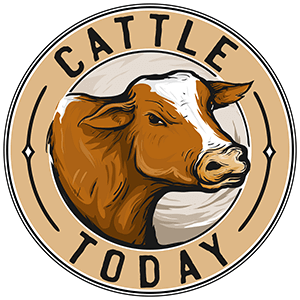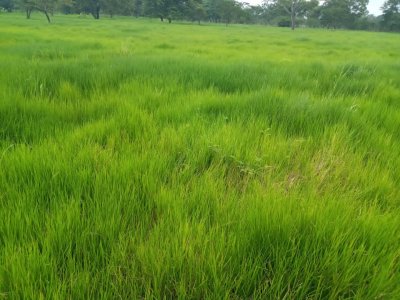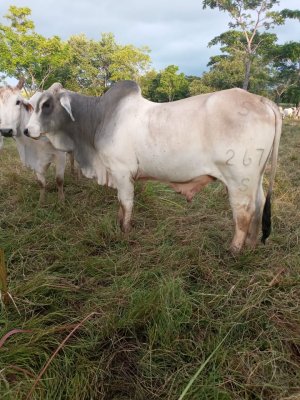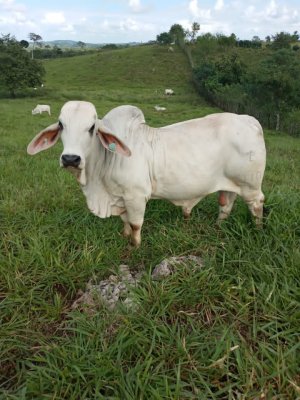You are using an out of date browser. It may not display this or other websites correctly.
You should upgrade or use an alternative browser.
You should upgrade or use an alternative browser.
Update on rotational grazing
- Thread starter Chapin81
- Start date

Help Support CattleToday:
Huntet02
KS
What kind of grass is that
kenny thomas
Well-known member
It's all about the type of grass. If you can graze while the grass still feels soft it seems to be better. As it matures it feels rougher and the protein goes down. Some grass that might be at 10" some at 20".
Dry cows should be ok id think.
Chapin81
Well-known member
What kind of grass is that
Koronivia grass (Brachiaria humidicola)
We call it humidicola. It's not the best quality. I think it tops out at 8% protein at best. However it's a great grass for areas that have terrible drainage, we don't have it all over just the low areas. I'm actually going to seed 2 hectares of cayman grass which tops out at 17% CP and another grass called mavuno which tops out at 21% CP when you have decent rainfall. Both of which are hybrids. Ones good for droughts which is mavuno and cayman which is good for low areas poor drainage.Chapin81
Well-known member
If I get brown tips I'm assuming I let it rest too long..does that sound right?? Is there a way for me to test the grass on-site and do some math to come up with Crude protein content?It's all about the type of grass. If you can graze while the grass still feels soft it seems to be better. As it matures it feels rougher and the protein goes down. Some grass that might be at 10" some at 20".
BC
Well-known member
Chapin81, what is the grass that you are trying to manage? Different grass species are managed differently. Bermuda needs to be managed on a 16 to 24 day rotation.
Chapin81
Well-known member
Chapin81, what is the grass that you are trying to manage? Different grass species are managed differently. Bermuda needs to be managed on a 16 to 24 day rotation.
Koronivia grass (Brachiaria humidicola)
Lee VanRoss
Well-known member
- Joined
- Apr 26, 2020
- Messages
- 2,392
- Reaction score
- 2,682
So where is your market and where does the finished product go?
His farm is in South America.So where is your market and where does the finished product go?
Lee VanRoss
Well-known member
- Joined
- Apr 26, 2020
- Messages
- 2,392
- Reaction score
- 2,682
to sstterry
Your interuption still begs the question, Where is your market and where does the finished product go?
You may want to reset your compass if you are in South America looking for Guatemala..
The promptness of your response is only exceeded by the inaccuracy of the content. I would politely
remind you it is ok to allow a person time to give their own response. Given time differences he may
engaged in another endeavor that would preclude a response at the moment. I sincerely hope you
are traveling with someone who can read a map, Best wishes for the New Year!
Your interuption still begs the question, Where is your market and where does the finished product go?
You may want to reset your compass if you are in South America looking for Guatemala..
The promptness of your response is only exceeded by the inaccuracy of the content. I would politely
remind you it is ok to allow a person time to give their own response. Given time differences he may
engaged in another endeavor that would preclude a response at the moment. I sincerely hope you
are traveling with someone who can read a map, Best wishes for the New Year!
Pardon me, you are entirely correct and I extend my apologies.to sstterry
Your interuption still begs the question, Where is your market and where does the finished product go?
You may want to reset your compass if you are in South America looking for Guatemala..
The promptness of your response is only exceeded by the inaccuracy of the content. I would politely
remind you it is ok to allow a person time to give their own response. Given time differences he may
engaged in another endeavor that would preclude a response at the moment. I sincerely hope you
are traveling with someone who can read a map, Best wishes for the New Year!
Last edited:
Chapin81
Well-known member
I'm in nyc but our cattle are in Guatemala. Everything is sold locally or to usually someone who has a permit to bring cattle to local slaughter houses. None of the beef ever makes it too far away from our country. the furthest north it will travel will be to southern Mexico. None of it heads south to El Salvador or Honduras.So where is your market and where does the finished product go?
Chapin81
Well-known member
Northern Guatemala near the border entry/exit point with Mexico called El Ceibo.His farm is in South America.
I have no knowledge whatsoever about the Central American or Mexican beef market, but do you see much competition from the Argentinian Beef producers like we do here in the US? I am just curious.Northern Guatemala near the border entry/exit point with Mexico called El Ceibo.
Chapin81
Well-known member
Omg yes!! Imported beef Rules over national.I have no knowledge whatsoever about the Central American or Mexican beef market, but do you see much competition from the Argentinian Beef producers like we do here in the US? I am just curious.
The reason is where it came from and what the steer was fed. For example...we only feed grass. Others feed chicken poop mixed with molasses and hay/corn. The slang term down there used is "we feed them chocolate" I refuse to feed ours chicken poop, not happening.
2. quality. most poor producers keep a calf as a herd sire and inbreed them, causing bag growth from what I have seen first hand and to supplement what's loss in size they will use anabolic steroids to beef them up. I refuse to do that as well.
i started rotational grazing in September and it's my first time managing this project since December 2019.
I linked a vid of the cattle grazing this AM I also don't have the best genetics due to lack of investment in good bulls. I started using registered bulls in January 2020 (110/8)is a Woodson de Manso son. and the 2nd one (267)a Clanton de Manso son. started working in September 2020.
Attachments
Omg yes!! Imported beef Rules over national.
The reason is where it came from and what the steer was fed. For example...we only feed grass. Others feed chicken poop mixed with molasses and hay/corn. The slang term down there used is "we feed them chocolate" I refuse to feed ours chicken poop, not happening.
2. quality. most poor producers keep a calf as a herd sire and inbreed them, causing bag growth from what I have seen first hand and to supplement what's loss in size they will use anabolic steroids to beef them up. I refuse to do that as well.
i started rotational grazing in September and it's my first time managing this project since December 2019.
I linked a vid of the cattle grazing this AM I also don't have the best genetics due to lack of investment in good bulls. I started using registered bulls in January 2020 (110/8)is a Woodson de Manso son. and the 2nd one (267)a Clanton de Manso son. started working in September 2020.
Sorry to keep pestering you, but does anyone in that area cross the Brahman with the British or Continental Breeds? I ask because here in the southeast we don't see a lot of Brahma or Brahman crosses.
[h3][/h3]
Chapin81
Well-known member
Your not pestering, no worries. Many years ago we started breeding registered brahman bulls with Zebu cattle. Gyr,nelore, guzerat and Indu brazil commercial not purebreds, due to certain reasons my father was advised inappropriately(we started using commercial Brahmans) Our genetics or traits started to disappear with what was being worked with. The big difference was steers would take 2+years to grow to 1000lbs or more , it used to take 18 months or so all grass fed. What I have seen is that producers with limited resources will crossbreed with anything. For example "brahman" not purebred X holstein not pure bred as well mixed with brown or jersey, and it looks like something that I wouldn't buy. Or nelore not purebred with anything commercial. Do we have Bos taurus yes we do but only the wealthy who have the resources to import them or embryos, semen. The only breed I have not seen is Hereford, angus. I have seen brangus but very very few, simmental fleckvieh very few imported from Mexico. Charolais we have but only in cool weather areas, we're we are it's usually 85F+everyday summertime it's usually 100F+ hope this answers your question.Sorry to keep pestering you, but does anyone in that area cross the Brahman with the British or Continental Breeds? I ask because here in the southeast we don't see a lot of Brahma or Brahman crosses.
Last edited:


